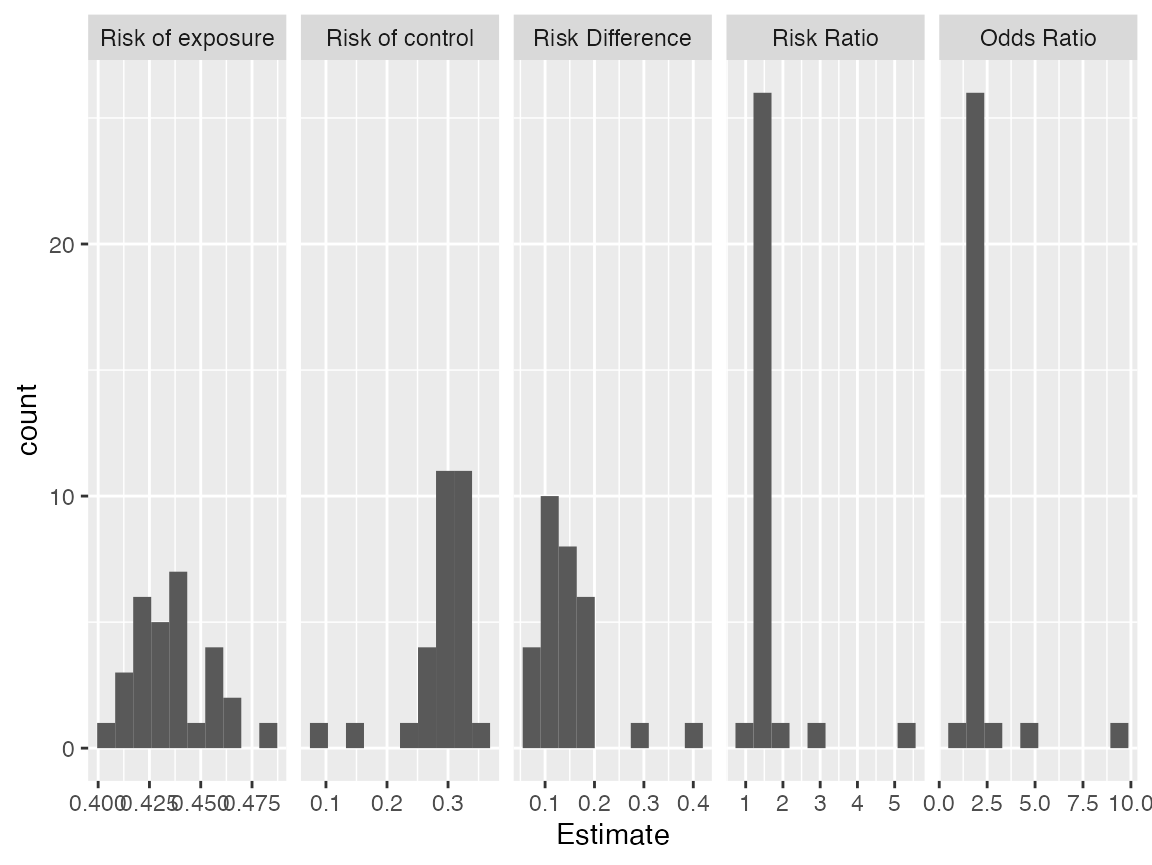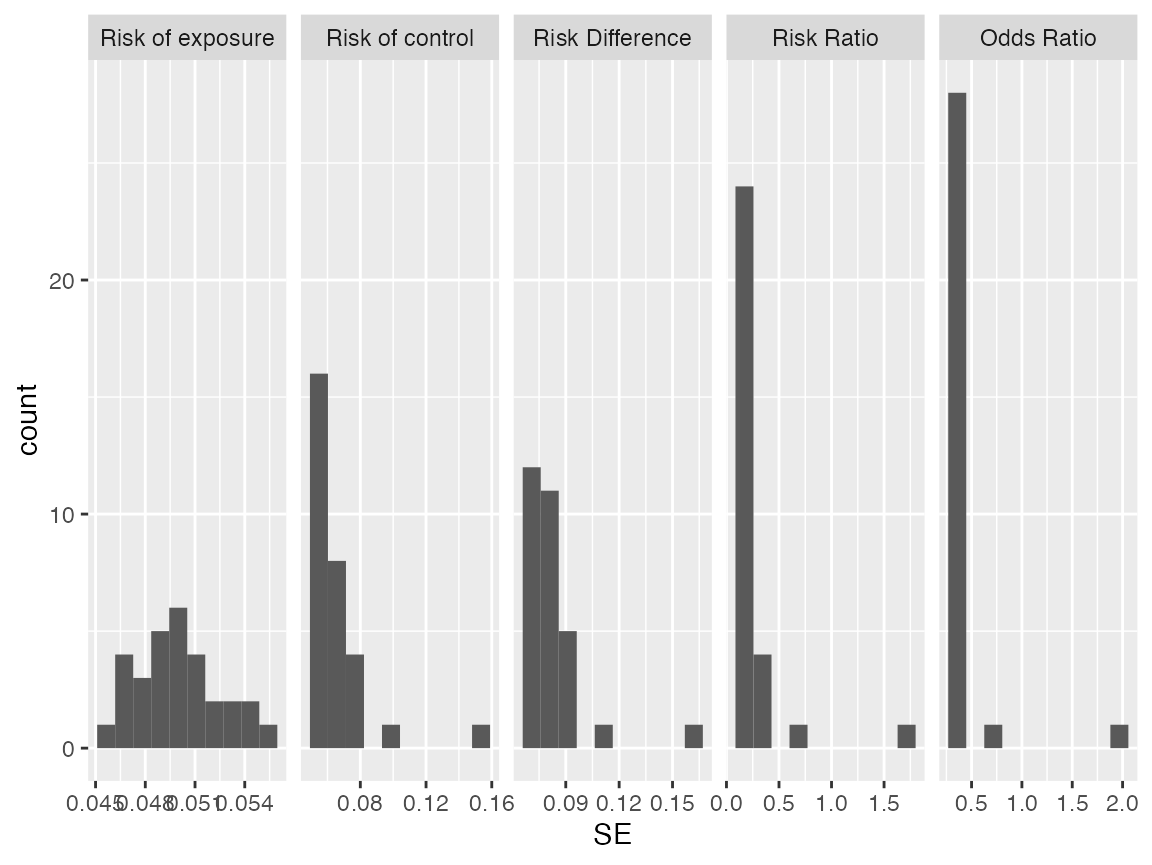Contents:
Repeated Cross-fitting
The purpose of repeated cross-fitting is to reduce the variability of estimate based on a specific split of data by summarizing estimates using different splits as suggested by Chernozhukov (2018).
Create an AIPW object
library(AIPW)
library(SuperLearner)
#> Loading required package: nnls
#> Loading required package: gam
#> Loading required package: splines
#> Loading required package: foreach
#> Loaded gam 1.22-2
#> Super Learner
#> Version: 2.0-28.1
#> Package created on 2021-05-04
library(ggplot2)
set.seed(123)
data("eager_sim_obs")
cov = c("eligibility","loss_num","age", "time_try_pregnant","BMI","meanAP")
AIPW_SL <- AIPW$new(Y= eager_sim_obs$sim_Y,
A= eager_sim_obs$sim_A,
W= subset(eager_sim_obs,select=cov),
Q.SL.library = c("SL.glm"),
g.SL.library = c("SL.glm"),
k_split = 2,
verbose=TRUE)$
fit()$
summary()
#> Done!
#> Estimate SE 95% LCL 95% UCL N
#> Risk of Exposure 0.446 0.0474 0.35254 0.539 118
#> Risk of Control 0.287 0.0635 0.16249 0.411 82
#> Risk Difference 0.159 0.0790 0.00378 0.313 200
#> Risk Ratio 1.553 0.2441 0.96220 2.505 200
#> Odds Ratio 1.997 0.3625 0.98121 4.063 200
Decorate with Repeated class
# Create a new object from the previous AIPW_SL (Repeated class is an extension of the AIPW class)
repeated_aipw_sl <- Repeated$new(aipw_obj = AIPW_SL)
# Fit repetitively
repeated_aipw_sl$repfit(num_reps = 30, stratified = F)
# Summarise the median estimate, median SE, and the SE of median estimate adjusting for `num_reps` repetitions
repeated_aipw_sl$summary_median()
#> Median Estimate Median SE SE of Median Estimate
#> Risk of exposure 0.434 0.0500 0.0516
#> Risk of control 0.303 0.0596 0.0635
#> Risk Difference 0.130 0.0776 0.0856
#> Risk Ratio 1.428 0.2211 0.2612
#> Odds Ratio 1.765 0.3439 0.4350
#> 95% LCL Median Estimate 95% UCL Median Estimate
#> Risk of exposure 0.3333 0.536
#> Risk of control 0.1787 0.428
#> Risk Difference -0.0373 0.298
#> Risk Ratio 0.9161 1.940
#> Odds Ratio 0.9122 2.617
# Check the distributions of estiamtes from `num_reps` repetitions
s <- repeated_aipw_sl$repeated_estimates
ggplot2::ggplot(ggplot2::aes(x=Estimate),data = s) + ggplot2::geom_histogram(bins = 10) + ggplot2::facet_grid(~Estimand, scales = "free")
ggplot2::ggplot(ggplot2::aes(x=SE),data = s) + ggplot2::geom_histogram(bins = 10) + ggplot2::facet_grid(~Estimand, scales = "free")